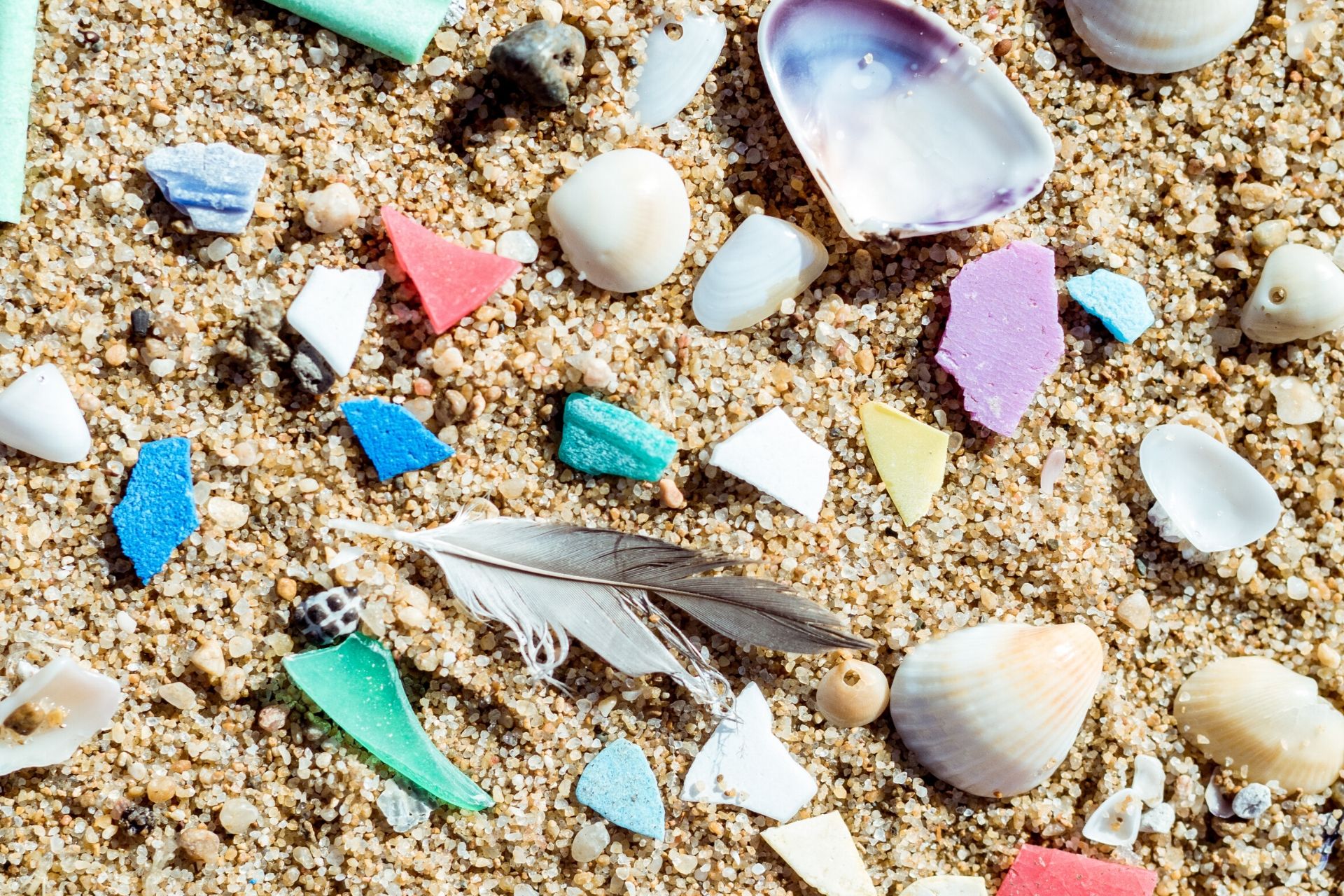
The Problem with Microplastics
As we learn more about plastic pollution, the focus is shifting from the big, obvious pieces we see in our day-to-day lives, to the more insidious, teensy tiny bits. This kind of plastic may seem smaller and more inconsequential, but microplastics are increasingly being revealed as the true threat posed by plastic. Marine biologist Alice Forrest and designer and videographer Harriet Spark have teamed up to create a free e-book – Microplastics, Massive Problem – about this teeny-tiny object with a horrifically humongous impact. With today being World Environment Day, Harriet and Alice have kindly shared an extract for us ahead of its launch next week.
WORDS: HARRIET SPARK
…….
Microplastics are a massive issue, but ultimately this is a hopeful story. There are scientists on the cutting edge of research, there are companies making more sustainable products and there are things all of us can do to make a difference. Microplastics, Massive Problem aims to showcase these solutions and answer everything you ever wanted to know about microplastics.

What is microplastic anyway?
Microplastic is basically small pieces of plastic, less than 5mm. That’s about the size of a sesame seed. Plastic doesn’t go away, so when it ends up in the ocean it keeps on breaking into smaller and smaller pieces, eventually becoming nanoplastics. Nanoplastics are really small – less than a millimetre in size – and are usually only visible with a microscope.
Where does microplastic come from?
Microplastic comes from two main sources:
Primary
Plastic which is intentionally small, and manufactured as tiny pieces. This includes microbeads and nurdles (plastic pellets which are used in the manufacturing process), like the tiny beads found in exfoliating face wash.
Secondary
Broken down pieces of bigger plastics, including fragments of bottles and bags, as well as polyester fibres from clothing. This could happen when a plastic bottle cap is gradually fractured by wind, waves and sunshine into smaller bits.
Microplastics generally aren’t captured by wastewater treatment facilities (sewage plants), and flush straight out into the ocean. Just like larger plastics, most waste comes from the land, not ships.
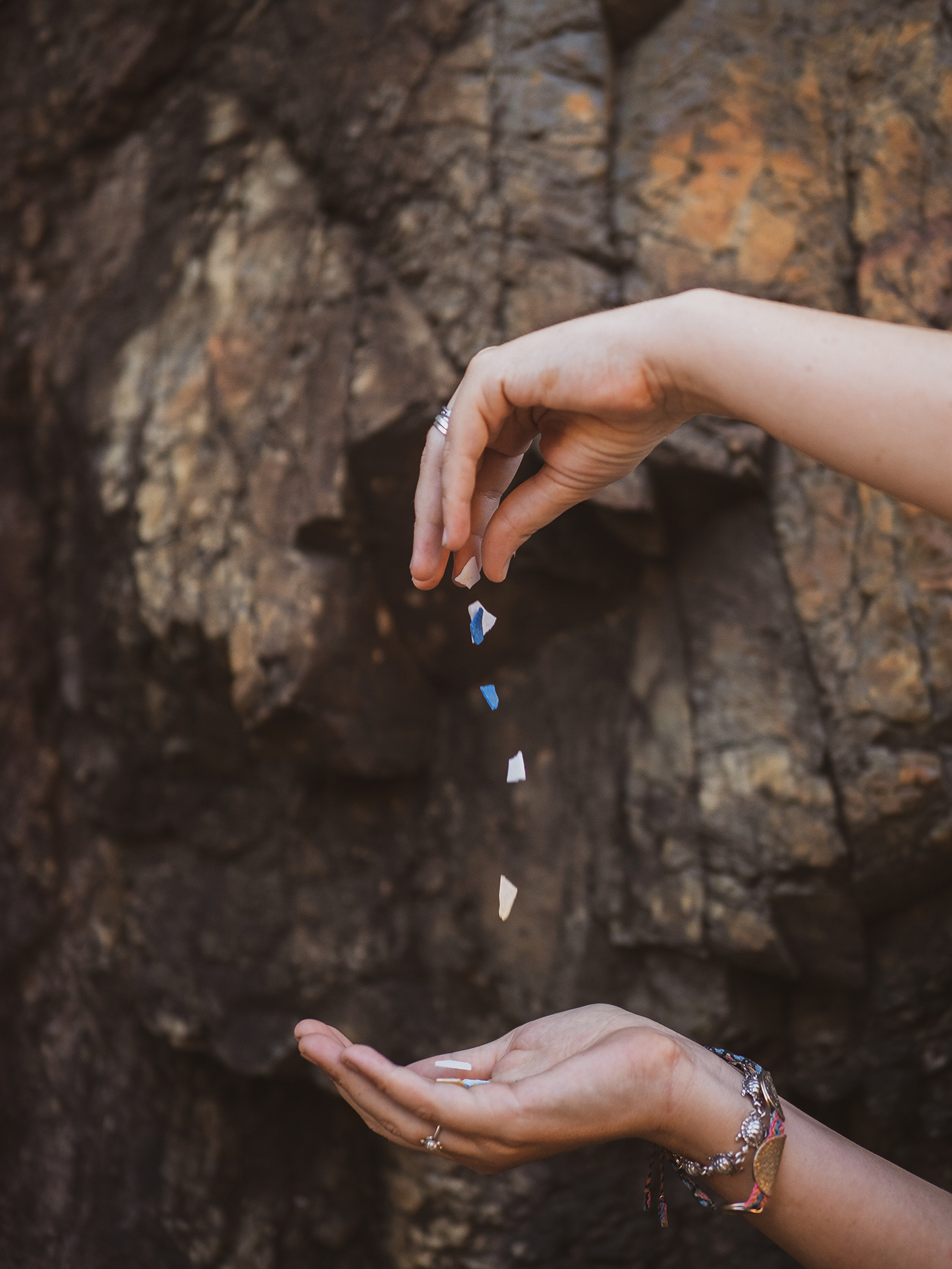
What can I do about microplastic?
We all have the power to make a difference on this issue. In the way we live, the businesses and products we give our money to, and the governments and policies we support. We are deliberately avoiding technological fixes here because they are yet to be proven to work – particularly on the large scale we need them to – and because as individuals, there are better things we can be focusing on, right now, to make a difference.
Speak up:
Talk to companies about your concerns.
Swap:
Switch out products for better alternatives. If you have products at home which already contain microplastics, send them back to the manufacturer with a note about why you’re doing it. Here are some examples of easy swaps you can make:
• Glitter: Buy eco glitter or get crafty with a hole punch and some leaves.
• Paint: Buy paint with natural oils used instead of synthetic plastics.
• Tea: Loose leaf tea tastes better and doesn’t come in little plastic bags.
• Cosmetics: Choose microplastic-free products. If you’re not sure, check out this list. Check your products to see if they contain microbeads, and choose natural alternatives for products with the Zero logo. Learn more here.
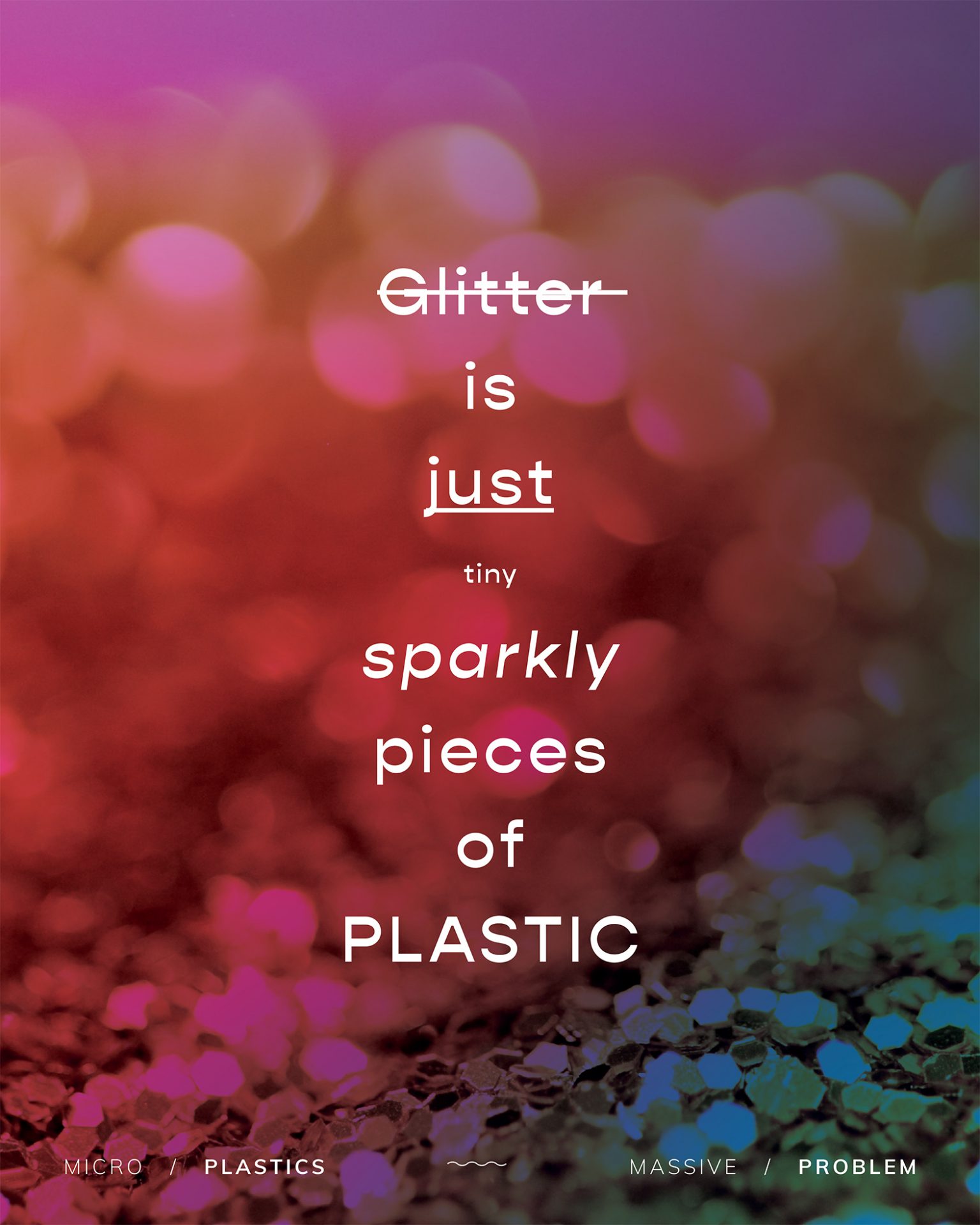
What about microfibres?
There are a bunch of ways to tackle this issue, ranging from swapping what you wear to catching some or all of the bits before they reach the ocean.
To stop releasing fibres, avoid cheaply made, fast-fashion clothes and buy natural fibres like hemp and cotton.
To catch the fibres, invest in a Guppy Friend washing bag (which catches 79% of fibres) or a Cora Ball (which catches 26% of fibres). Consider buying a washing machine filter to attach to your machine.
To reduce the shedding, wash less frequently, with a full load to create less friction and go for colder wash settings.
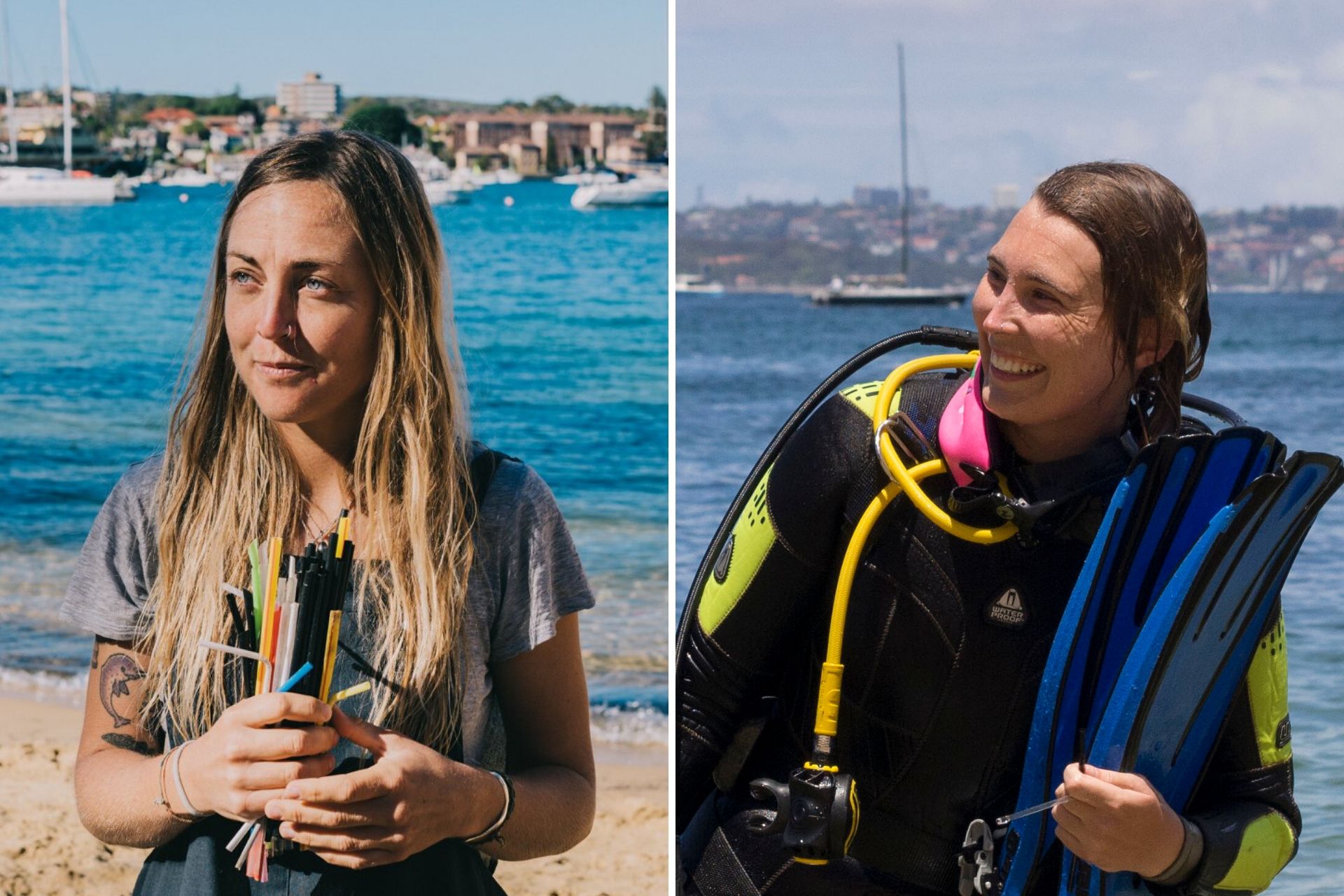
IMAGE: ALICE FORREST (LEFT) AND HARRIET SPARK (RIGHT)
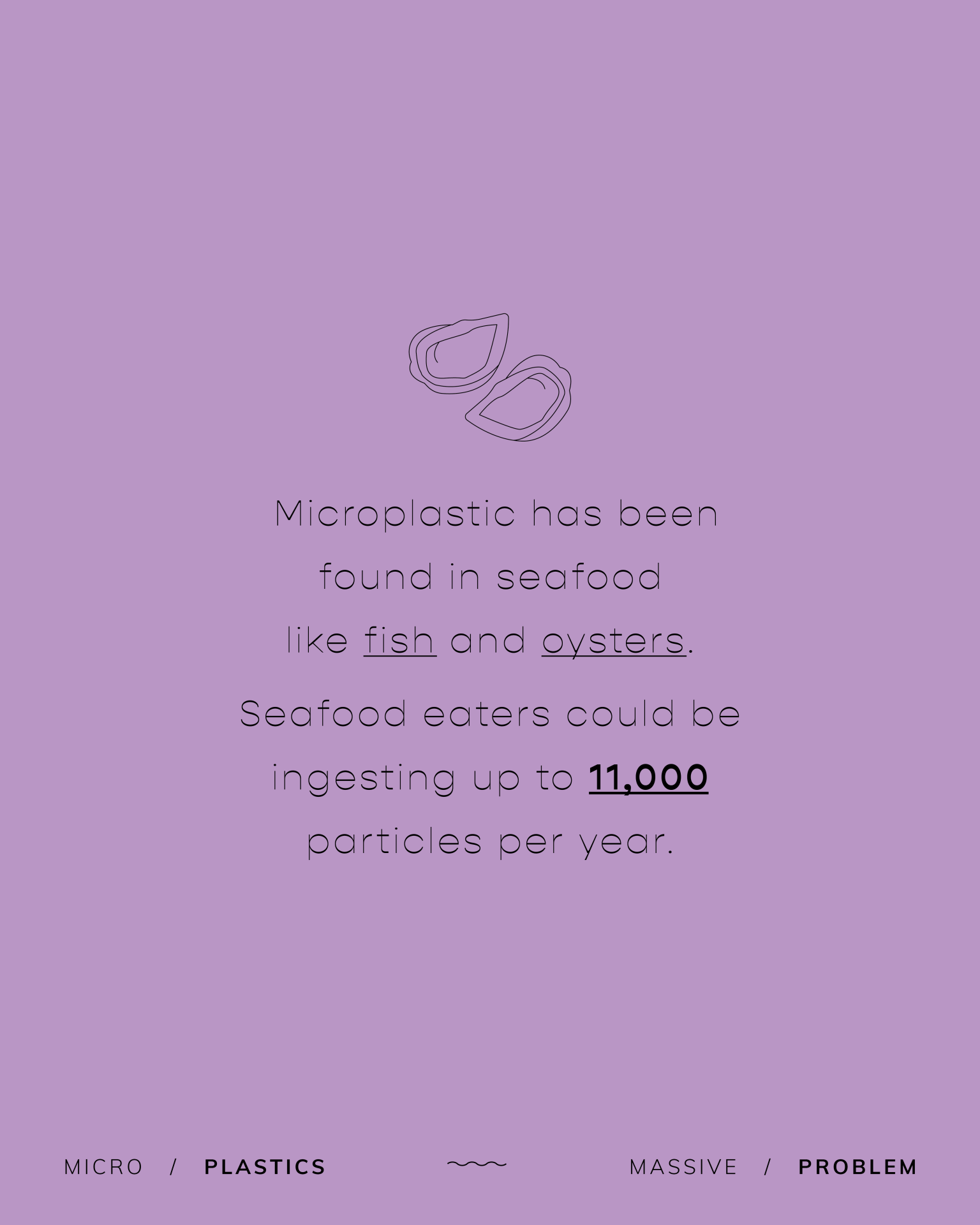
The BIG problem with microplastics is that it often comes from all the bigger pieces of our trash. So this isn’t just about avoiding microbeads and fibres but also reducing single-use plastics in your life in general.
For larger plastic pieces (the source of most microplastics) there are hundreds of ways to reduce our personal plastic use, as well as business and commercial waste. We can think about changing personal habits, shopping more consciously (voting with your money), supporting legislation changes, donating or volunteering with organisations and spreading the word.
Ultimately, reducing our consumption, repairing and reusing what we have and choosing bulk food and plastic-free items when we shop will already make a huge difference. For some ideas, check out our other e-book Part of the Solution.
……
Read more from Harriet and Alice’s e-book – Microplastics, Massive Problem – being launched on World Oceans Day, Monday the 8th of June, by signing up here.

